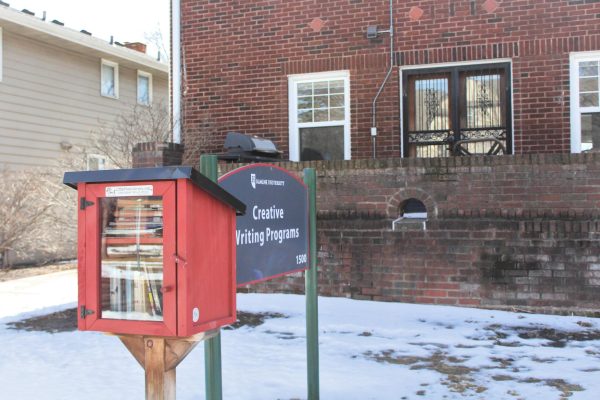How should we address bullying in schools?
On Wednesday, April 9, Minnesota Governor Mark Dayton signed the Safe and Supportive Schools Act bill into law, aimed at reducing bullying in public schools and creating a safe environment for students. The preexistent Minnesota law on bullying was only 37 words long and required schools to have a policy on bullying, but did not include information about what the policies should include. Following several student suicides and a 2011 lawsuit involving the bullying of students in the Anoka-Hennepin school district, the issue gained more attention and induced a call for action among concerned citizens. In an attempt to correct the weaknesses of the old law, the new one requires school staff and educators to be better trained to prevent bullying from happening. In addition, reported instances of bullying will be tracked and investigated by a staff member designated by the school. Districts do not have to institute the statewide policy if they already incorporate the required multi-pronged anti-bullying approach, but they must accept the revisions of the new law if they do not opt to create one of their own. The law will become effective for the 2014-2015 school year. – Compiled by Jackie Bussjaeger
HU students should understand that sometimes living and working in the real world means dealing with people who might intimidate you in one way or another. Of course, the safety net of campus gives students the opportunity to experiment with boundaries. At some point, there might be a time when you cannot pick up a phone and dial 911. As a bully would say, “Don’t be a pussy.”
If schools in general taught courses in cordial and diplomatic problem solving, respect and the ethical treatment of others, there would have never been a need for the state of Minnesota to waste valuable taxpayer resources on an anti-bullying bill. Learning from bullying is an effective tool because the students take the journey with the characters—the bully, his target, and the bystander—and all get an understanding of what each character experiences. The bill that is being passed is a buffoonery of victimization and encourages the abandonment of students rights; having the opportunity to grow up and experience valuable life lessons will be replaced with bureaucratic stupidity.
Through the “Safe and Supportive Minnesota Schools Act” passed on Wednesday, April 9, the government is restricting the freedom of expression and the rights of the individual by preventing students from developing as human beings and rejecting the natural evolution of growth.
There was a time when getting an education meant getting your ass kicked. Sometimes getting punked could have been a test in your own social caste of people with effective tools of embarrassment —in some cases, being embarrassed, is one of the best educators. This is no different than teachers using shame as a classroom management tool. I’m not saying it is okay for students to go around and beat the crap out of the weaker herd members, but history tells us sometimes a good butt whipping becomes a rite of passage that will be remembered for years to come. Celebrities like Jessica Alba, Christian Bale, Kate Winslet and Chris Rock all have been bullied at some point during their time in public school.
I understand we must take into account the many tragedies of peer pressure that have resulted in untimely deaths and suicides for those youth who could not handle the peer pressure. Addressing why kids die when being bullied has been an indefinable juggernaut in history. The studies have been done and money spent. Rather than collectively educating children on the challenges of respect, class and social structures, school systems collectively segregate while local governments pass bills to protect the few, in some cases neglecting concerns of parents and educators that continue to interfere with the process life lessons for students and their peers.
Groups like OutFront Minnesota organized, rallied and built popularity and donors (like they did with their Vote No campaigns) to push the liberal agenda of anti-bullying while forgetting the very important educational benefits to interpersonal relationships. The mainstream media, social media and websites popped up senselessly, promoting the fight against bullying that became utterly outrageous. Websites like “I’m getting bullied (dot) com” told users, “This is a place to share your story with others who may be dealing with the effect of bullying.” Many websites like this popped up, promoting false hope and moving the liberal agenda of victimhood further into the mainstream. A right of passage for some has turned into a policy-bound tool used for the obstruction of common sense.
In 2011 at the “Bullying Prevention Summit,” President Obama committed to providing $132M in funding from the 2012 budget toward anti-bullying efforts in schools. The money could have been better used to educate children in public schools, especially failing schools in Minnesota.
In the U.S., there are roughly 16,600+ public school districts. If the $132M went to public schools and not private schools, home school networks or other “alternative” education options, this means that there would be approximately $8000 allocated to each school district. Now, we know that most districts consist of multiple schools, covering the gamut of preschool-12. It’s hard to come up with an average-size district because they vary so much. But, for the sake of argument, let’s say there are 10 schools total in any given district. If we evenly allocated the $8000 to those schools, you’d see that each school would receive $800 toward their anti-bullying efforts. We know “more money” has not been the answer to the majority of challenges facing our education system.
As progressive thinkers, we must ask: what problem has the government really solved? Poverty? Crime? Racism? Why do we think that this time it’s going to be any different? The “Safe and Supportive Minnesota Schools Act” is a sad example of how government continues to interfere with life.







